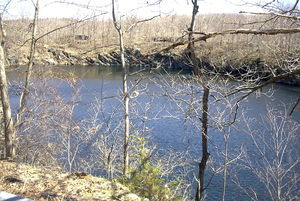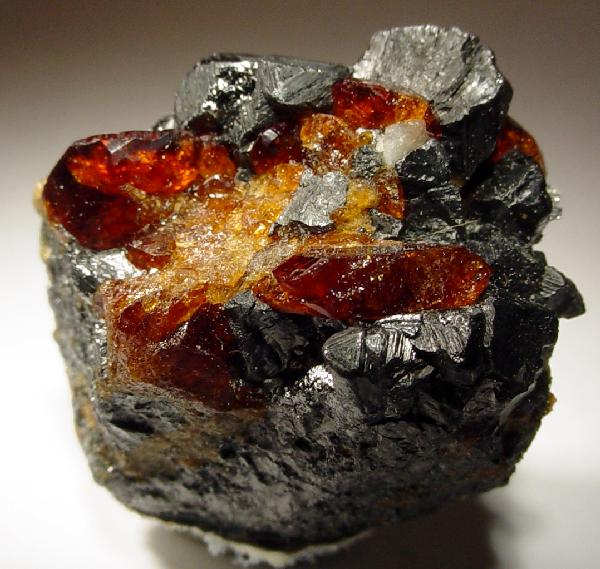 |
| The Tilly Foster Mine as it appears today. |
This isn’t a gold mine instead it was an
iron mine and where my
great-grandfather went to work when he first arrived in the United States after
leaving Nova Scotia for
poaching gold on the Queensland. He left
his wife and child behind in Halifax, Nova
Scotia intending to bring them down to the States as soon as he
earned enough money. These events
started in the spring of 1870 at the mine he worked as a mine rigger a job he
had done earlier in Glace Bay. Much of the work was stonemasonry, a job he
pursued for the rest of his life.
The Tilly Foster Mine
itself is today an abandoned iron mine that was the most active during the
1970s that is about two miles west of the village
of Brewster
 |
| Chondrodite on magnetite from the Tilly Foster Mine Photo by Rob Lavinsky |
The main minerals produced from the mine were magnetite and chondrodite from a mine
that employed 300 workers and reached a depth of 600 feet (180 meters). At the height of its production they were
producing 7,000 tons of ore a month where after mining it was shipped by train
to New York City where large
amounts of it were trans-shipped to Scranton , Pennsylvania
After reaching a point where it was no longer feasible to
operate it as an underground mine it was converted into an open pit mine during
the years 1887 to 1889. In 1895 a major
collapse occurred that killed thirteen miners.
The collapse of the mine spelled its death knell and it was flooded by a
nearby reservoir that supplied New York City
with drinking water.
In its day it was the largest open pit mine in
the world that collapsed in 1895 killing thirteen miners when tons of rock came
crashing down on their heads. Many of
these miners were only known by their numbers.
The cave-in of the Tilly Foster Mine was caused by heavy rains that
soaked into a mass of soapstone
near the surface of the mine. The mine
was described as a funnel shaped oval hole in the ground that at the time of
the collapse was 400 feet deep.
During World War II the abandoned mine was pressed into
service by the military where it was used as a site to test and train with
diving equipment. A collection of
minerals and other artifacts from the mine can be seen at the Southeast Museum in Brewster ,
New York

The Tilly Foster Mine is over 660 feet deep by 1895. The November collapse of the north wall, where 100-200 tons of rock fell on miners working in the upper mine, in the same year. The mine foreman and engineer continued to drill tunnels at depths of over 700 feet below the surface, when the hit an underground spring, The New York State authorities closed the mine in 1897 due to safety concerns.
ReplyDelete